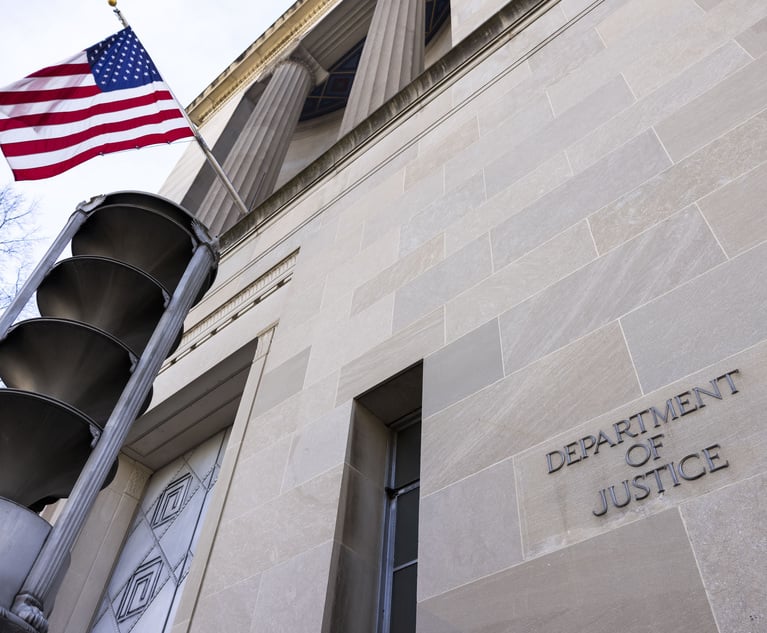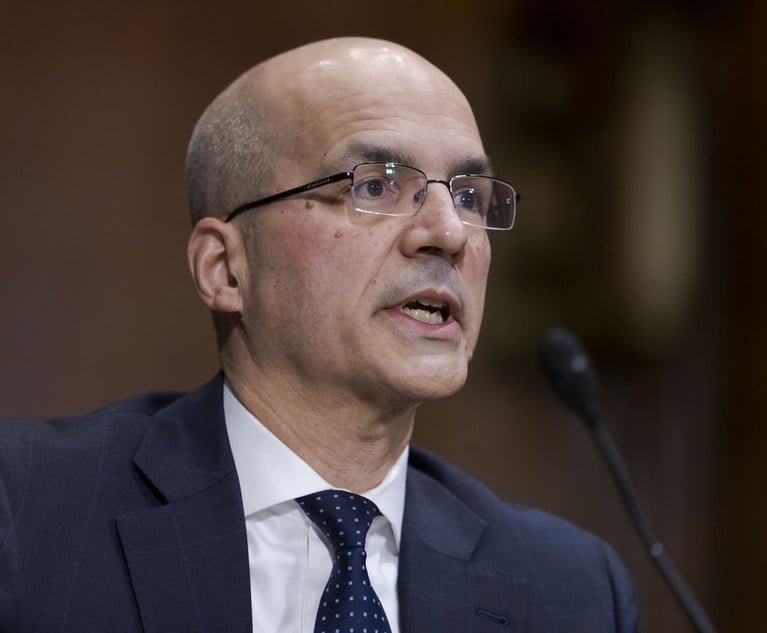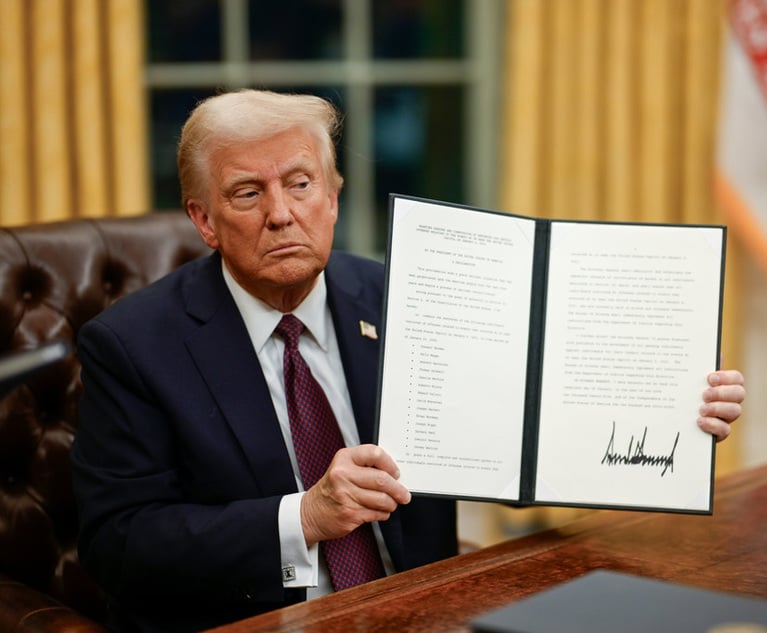The Time Has Come to Address Rule 10b5-1 Trading Plans and Their Shortcomings
If the use of Rule 10b5-1 plans continues to grow, it is important that additional requirements are implemented to ensure the mitigation of insider trading.
March 06, 2019 at 02:30 PM
8 minute read
 Photo: TZIDO SUN/Shutterstock.com
Photo: TZIDO SUN/Shutterstock.com
Mention the words “insider trading,” i.e., the improper buying or selling of securities while in possession of material nonpublic information (MNPI), and the mind might begin to conjure nail-biting clandestine information gathering schemes on the TV show Billions or the more mundane image of a hedge fund boss working the phones and slowly schmoozing and pressuring MNPI out of executives at publicly traded companies. These images are not surprising given that the SEC's insider trading crackdown over the last decade, in the wake of SEC v. Galleon Management, LP, has mainly focused on illicit trading by corporate outsiders like securities traders, high-profile hedge funds, and financial industry professionals like lawyers and investment bankers.
There is, of course, also insider trading committed by company insiders, e.g., officers, directors, or large stockholders with access to MNPI. This type of insider trading most commonly involves an insider dumping stock just before bad news becomes public. Indeed, just days ago the SEC charged Apple's former global head of corporate law with using MNPI to sell nearly all his Apple stock at opportune times and avoid over $300,000 in losses. Shockingly, according to the SEC's press release, the charged attorney had been responsible for “review[ing] and approv[ing] the company's insider trading policy and notify[ing] employees of their obligations under the insider trading policy around quarterly earnings announcements.”
Given that many executives receive significant amounts of compensation in the form of company stock, the risk of insider trading is unsurprising, but neither is an executive's legitimate desire to sell stock to have a diversified investment portfolio or pay taxes. Faced with this reality and the fact that executives also receive significant amounts of MNPI, in 2000, the SEC adopted Rule 10b5-1 to balance the need for corporate insiders to sell stock with the need to maintain the integrity of equity markets by preventing insiders from trading on MNPI. At the time, the SEC noted that the “rule should increase investor confidence in the integrity and fairness of the market … [and] will benefit corporate insiders by providing greater clarity and certainty on how they can plan and structure securities transaction.”
Rule 10b5-1 allows insiders to enter into a “plan,” which specifies in advance the amounts, prices, and dates for the insider's stock to be sold, includes a formula for determining those parameters, or delegates trading decisions to a person without MNPI. If executed properly, the existence of these plans may provide an affirmative defense to insider trading allegations by establishing that a purchase or sale was not made on the basis of MNPI. As a result, Rule 10b5-1 plans have become common place in the compliance regimes of public companies to prevent litigation and investor relations nightmares.
Rule 10b5-1 has not operated without criticism or concern. Academic studies and journalistic investigations have shown that trades under Rule 10b5-1 outperform the market and a former Director of the SEC's Division of Enforcement stated that these academic studies “suggest that the Rule is being abused.” As a result, the question is often asked whether an insider who sees financial success pursuant to a Rule 10b5-1 plan improperly used MNPI in designing, entering into, or amending the plan. There have been cases where questions about knowledge of MNPI and the execution of the plans have resulted in the defense not providing a complete shield to executives or the company. Likewise, given the studies of abnormal returns, it is possible that trades that should have resulted in insider trading liability have escaped scrutiny.
In light of these criticisms and concerns, on Jan. 28, 2019, Reps. Maxine Waters (D-Calif.) and Patrick McHenry (R-N.C.) introduced the Promoting Transparent Standards for Corporate Insiders Act (H.R. 624), which if enacted into law would require the SEC to examine whether Rule 10b5-1 should be amended. The House passed the bill with a 413-3 vote and the Senate must now act on it.
This proposed legislation creates an opportunity to address the criticism the Rule has faced and can further curtail incidents of insider trading by preventing the successful manipulation of trading plans. The bill directs the SEC to consider whether Rule 10b5-1 should be amended to: (1) limit an insider's ability to adopt a trading plan during a particular timeframe; (2) limit the frequency with which a plan may be modified or cancelled; (3) establish a mandatory delay between adopting a plan and the first transaction pursuant to that plan; and (4) limit the adoption of multiple overlapping plans. The bill also asks that the SEC consider whether companies should be required to publicly file trading plans and transactions pursuant to those plans and whether boards of companies should adopt policies governing plans and monitor plan transactions.
It's clear from the proposed legislation that an important consideration is to clarify existing prohibitions against insider trading and to protect investors. As a result, the SEC should seriously consider taking action on each point raised in the bill. In particular, for trading plans to truly mitigate fraudulent trading, the SEC should consider and focus on implementing the following safeguards.
Given the regulatory regime's general focus on providing disclosure to investors, the SEC should require that companies and insiders disclose trading plans in detail to the SEC and investors. While some companies already do this and high-level executives are already required to disclose their transactions under Section 16 of the Securities Exchange Act of 1934, disclosure of all plans will create uniformity among companies. Also, the increased transparency should strengthen the insider's defense and perhaps even prevent litigation or question in the first place.
Companies also have an interest in requiring insiders to disclose their trading plans to prevent future securities fraud liability. Insider trading is often used to demonstrate scienter in such litigation and Rule 10b5-1 plans have not been a panacea to findings of scienter when there are questions about whether the plan was properly entered into and used.
The SEC should also address an insider's current ability to terminate plans or amend plans to change the amount or timing of trades. These powers defeat the purpose of allowing insiders to “passively” sell stock pursuant to certain dates and triggers. A 2009 study showed that many plans were terminated just before positive news was reported, thus, potentially allowing the executive to hold the stock longer and capture more price upswing once the news was revealed. Providing that plans can only be altered or terminated when the executive does not have MNPI does not go far enough, since a lack of knowledge is very difficult to ascertain. Thus, outside of predefined triggers within the plan at inception, insiders should not be permitted to amend or terminate plans. If the SEC does not take action to prevent termination and amendment, the SEC should at least require that such actions be disclosed to the market.
The SEC should also further limit discretion and regulate the timing of plans. Insiders currently have the ability to enter into multiple, overlapping plans. Also, insiders can limit plan duration to as short as a few months and can trade pursuant to the plan immediately upon entering it. This discretion could allow unscrupulous insiders to quickly enter into new or overlapping plans and use inside knowledge to maximize profits or avoid losses from an impending price drop while under the protection of a trading plan since evidence of knowledge or lack thereof is difficult to show.
Imposing a 30 to 90 day “cooling off” period would prevent an insider's ability to enter into a trading plan based on knowledge of MNPI as any knowledge will likely be stale by the time trading commences. This waiting period would limit an insider's discretion and could prevent the improper offloading of shares just before stock price declines.
Similarly, Rule 10b5-1 plans with a short duration typically raise suspicion since a short-term plan may be a façade for insider trading based on MNPI that will shortly materialize. The longer the plan, the less likely this is the case. A required duration of at least 6 months could prevent the offloading a large amount of shares in a short window and potentially remove impropriety.
Finally, creating a volume threshold would reinforce Rule 10b5-1's affirmative defense by limiting the percentage of overall holdings an insider can sell at one time. The Rule should also be amended to limit the percentage of overall stock holdings permitted to be sold in any given transaction, which will alleviate the possibility that an insider enters into the plan to dump stock before bad news hits the market.
If the use of Rule 10b5-1 plans continues to grow, it is important that additional requirements are implemented to ensure the mitigation of insider trading. As the SEC undertakes its review, the aforementioned considerations will help alleviate litigation concerning improper trading despite the existence of Rule 10b5-1 trading plans.
Alfred L. Fatale III is of counsel and Lisa Strejlau is a law clerk at Labaton Sucharow.
NOT FOR REPRINT
© 2025 ALM Global, LLC, All Rights Reserved. Request academic re-use from www.copyright.com. All other uses, submit a request to [email protected]. For more information visit Asset & Logo Licensing.
You Might Like
View All
'A Shock to the System’: Some Government Attorneys Are Forced Out, While Others Weigh Job Options
7 minute read
'Serious Legal Errors'?: Rival League May Appeal Following Dismissal of Soccer Antitrust Case
6 minute read
How Some Elite Law Firms Are Growing Equity Partner Ranks Faster Than Others
4 minute read
Trending Stories
- 1States Accuse Trump of Thwarting Court's Funding Restoration Order
- 2Microsoft Becomes Latest Tech Company to Face Claims of Stealing Marketing Commissions From Influencers
- 3Coral Gables Attorney Busted for Stalking Lawyer
- 4Trump's DOJ Delays Releasing Jan. 6 FBI Agents List Under Consent Order
- 5Securities Report Says That 2024 Settlements Passed a Total of $5.2B
Who Got The Work
J. Brugh Lower of Gibbons has entered an appearance for industrial equipment supplier Devco Corporation in a pending trademark infringement lawsuit. The suit, accusing the defendant of selling knock-off Graco products, was filed Dec. 18 in New Jersey District Court by Rivkin Radler on behalf of Graco Inc. and Graco Minnesota. The case, assigned to U.S. District Judge Zahid N. Quraishi, is 3:24-cv-11294, Graco Inc. et al v. Devco Corporation.
Who Got The Work
Rebecca Maller-Stein and Kent A. Yalowitz of Arnold & Porter Kaye Scholer have entered their appearances for Hanaco Venture Capital and its executives, Lior Prosor and David Frankel, in a pending securities lawsuit. The action, filed on Dec. 24 in New York Southern District Court by Zell, Aron & Co. on behalf of Goldeneye Advisors, accuses the defendants of negligently and fraudulently managing the plaintiff's $1 million investment. The case, assigned to U.S. District Judge Vernon S. Broderick, is 1:24-cv-09918, Goldeneye Advisors, LLC v. Hanaco Venture Capital, Ltd. et al.
Who Got The Work
Attorneys from A&O Shearman has stepped in as defense counsel for Toronto-Dominion Bank and other defendants in a pending securities class action. The suit, filed Dec. 11 in New York Southern District Court by Bleichmar Fonti & Auld, accuses the defendants of concealing the bank's 'pervasive' deficiencies in regards to its compliance with the Bank Secrecy Act and the quality of its anti-money laundering controls. The case, assigned to U.S. District Judge Arun Subramanian, is 1:24-cv-09445, Gonzalez v. The Toronto-Dominion Bank et al.
Who Got The Work
Crown Castle International, a Pennsylvania company providing shared communications infrastructure, has turned to Luke D. Wolf of Gordon Rees Scully Mansukhani to fend off a pending breach-of-contract lawsuit. The court action, filed Nov. 25 in Michigan Eastern District Court by Hooper Hathaway PC on behalf of The Town Residences LLC, accuses Crown Castle of failing to transfer approximately $30,000 in utility payments from T-Mobile in breach of a roof-top lease and assignment agreement. The case, assigned to U.S. District Judge Susan K. Declercq, is 2:24-cv-13131, The Town Residences LLC v. T-Mobile US, Inc. et al.
Who Got The Work
Wilfred P. Coronato and Daniel M. Schwartz of McCarter & English have stepped in as defense counsel to Electrolux Home Products Inc. in a pending product liability lawsuit. The court action, filed Nov. 26 in New York Eastern District Court by Poulos Lopiccolo PC and Nagel Rice LLP on behalf of David Stern, alleges that the defendant's refrigerators’ drawers and shelving repeatedly break and fall apart within months after purchase. The case, assigned to U.S. District Judge Joan M. Azrack, is 2:24-cv-08204, Stern v. Electrolux Home Products, Inc.
Featured Firms
Law Offices of Gary Martin Hays & Associates, P.C.
(470) 294-1674
Law Offices of Mark E. Salomone
(857) 444-6468
Smith & Hassler
(713) 739-1250






